#also big fan of when artists portray characters loosing it and making their eyes lack any sparkle
Text


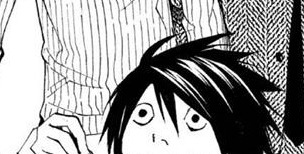

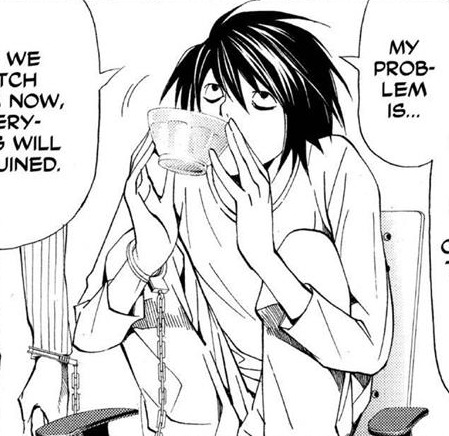
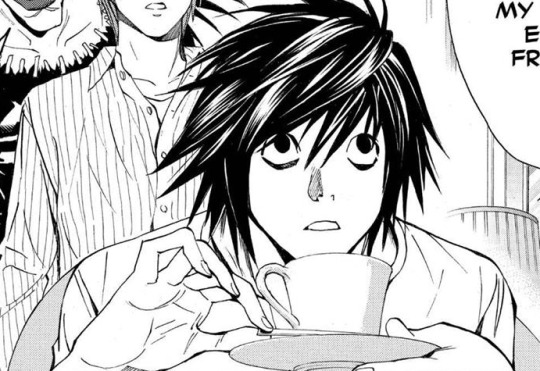
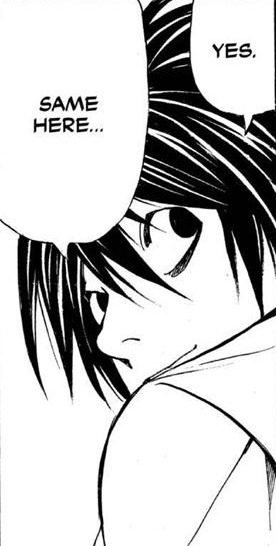


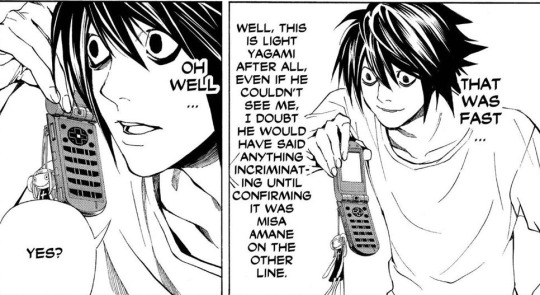



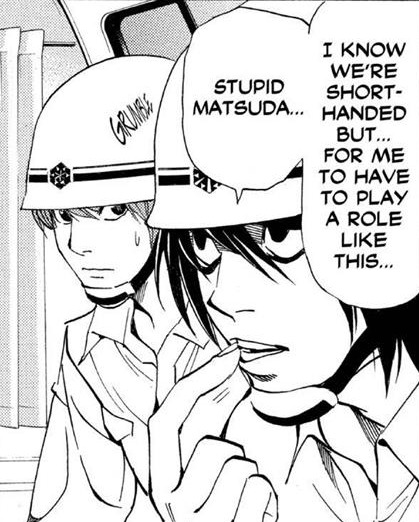
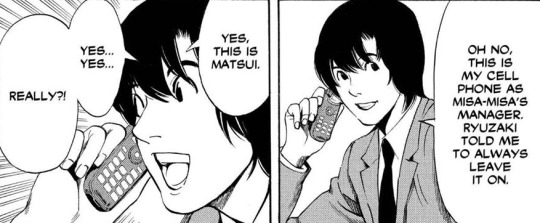
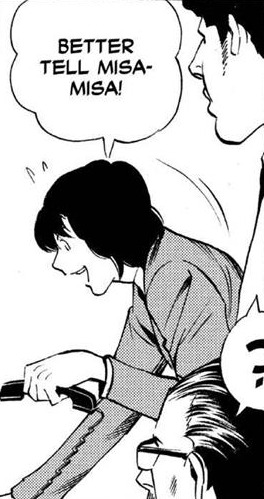
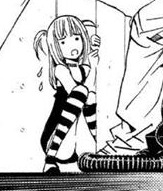
#SO LIKE LIKE LIKE#i've been reading d.eath n.ote lit the whole day#/dont ask me why the site that is literally called d.eath n.ote m.anga o.nline has the pic of that b.nha guy i have no idea but#me as i read: LOOK AT HIMMM -opens a t.ab showing L-#so i'll proceed to show u guys the l's i gathered#ALSO M.ATSUDAAAAA#I LOVE HIM SM#imagine if r.anpo and l met- BOOM#OH OH!!! L meeting o.guri my g o d#imagine like the best detective meeting the guy who's ability is making the perfect crime#which u can sort of imagine how that would go since it happened with r.anpo and neither he nor l have supernatural abilities#as in like; otherworldly (bc they are insane on their own ways)#UMMM-- so i might have opened too many tabs-#and this is ONLY l#the way i read the manga is funny bc i started around the 60th chapter and went to the end + after the k.ira case when near in an adult#then the next k.ira#and then i went like; man this was so good ! i had forgotten why i liked it so much back then#and i decided to read it from scratch#so i went back from 0 to now 45#also big fan of when artists portray characters loosing it and making their eyes lack any sparkle#the difference between the begining + when l.ight looses his memories vs his l.ight/k.ira look#as the story progresses was just great#like oh! there's something going onnnn#very interesting if i must say so#but also how some characters just dont have that;; like l his eyes are pitch black too like no sparkles at all#;ooc#ooc
3 notes
·
View notes
Photo

Cover by Tula Lotay.
Today I’ll be reviewing “All-Star Batman” issue 7, “Ends of the Earth, Part 2,” by Scott Snyder and Tula Lotay, published by DC Comics.
I’ll admit, I’m not always a fan of Scott Snyder’s take on Batman, and go back and forth depending upon a given plot. His Joker stories tend to leave a bad taste in my mouth, but the rise and fall of Mister Bloom, including the new Batman, was an interesting turn of events. Therefore, I didn’t know what to expect coming into this issue. Thankfully, I was pleasantly surprised.
Snyder’s depiction of Dr. Pamela Isley, better known by her identity as Poison Ivy, is spot on. Unlike most of Batman’s villains, it’s extremely hard to call her insane, even by the very loose definition put forth by Gotham City’s infamous Arkham Asylum. She has a precise moral code, one that admittedly puts her easily into the role of bio-terrorist more than once, and with good reason on the part of her victims, given her decided lack of concern for most adult human beings. Due to her abusive relationship with her father, she has a high level of compassion for young children in particular. However, aside from that one stipulation and her few friends outside of it, her ideas of right and wrong are heavily tied to the Green, the elemental force of plant life in the DC universe. In fact, she is even more tightly connected to them in her morality than the Green’s own avatar, the Swamp Thing.
Batman’s behavior is also a treat. He proves himself to be a master actor in how he can deceive Ivy, whilst also asking for her help. His story about Lilith Seguro, along with his deceiving manner of telling it, shows his understanding of Ivy’s mentality. Still, this issue is more her story than his. I do however have to wonder what the green lights on his Batsuit were actually for: were they an antitoxin projector, a modification of his “Haz-Batsuit” from the “Justice League” arc “The Amazo Virus,” or something else? Regardless, it isn’t particularly important.
I have to admit, I laughed at the scene wherein Dr. Isley took control of the shopkeeper. His last words were especially funny, given he says exactly what she does, word for word, including insulting himself.
The villains of this issue were rather intriguing. The last I remember happening with the Blackhawk Program, they had been seen in their own comic, in mid-2012. A five-year absence is quite noticeable, which makes me wonder whether they have been controlled by Mother Machine’s remnants since, if any exist. Given they were supposedly a heroic paramilitary organization, is this a sign of a turn to villainy, another group using their name, or an outright false-flag operation?
I’ve always been a big fan of alternative technologies, so the high-tech gadgetry used by the Blackhawk Program interested me. Their “quantum stealth” technology seems to be able to fool a wide variety of technological scanners, but Ivy’s connection to the mystical Green seems able to override their invisibility. Their “transuranic” incorporated into their net that they used in an attempt to hold down Ivy for death by immolation shows the scientific bent to their work even further, as well as an intensely dangerous level of technology at work. “Transuranic” elements, or as they are better known, “transuranium elements,” are those with higher atomic numbers than 92 (that of uranium), and are highly radioactive. Is the method that they hoped to contain Poison Ivy tied to an attempt to give her radiation poisoning before she can adapt her physiology to fight it off? It’s an intelligent move from a tactical perspective, but nonetheless very immoral and environmentally irresponsible.
I last saw Tula Lotay’s artwork on the covers of the “Tomb Raider” comic run by Dark Horse Comics through the work of Mariko Tamaki and Phillip Sevy, taking place after the “Rise of the Tomb Raider” video game. As such, I didn’t know what to expect from her as a key artist. Suffice to say, her artwork, both on the cover and within the issue, was absolutely perfect. The soft colors and might I say “splashier” method of using them felt very natural, meshing very well with a nature-based issue. When Ivy is using her powers, the colors seem to flow around her skin, giving her both an unearthly feel and one that fits right at home at the same time. The art does very good work in portraying the natural manipulation parts of her powers even without her having to say a thing.
The use of her latest outfit, which fit well for a scenario that takes place in the borderline lifeless Death Valley, was a great compromise between the plant-based outfits for which she is most famous and a more traditional cloth attire, with the tank top and tight pants working well together. Admittedly, the high heels seem a bit much for someone as close to earth as she is, but I suppose beggars can’t be choosers. A particularly interesting note is the dirt on her hands and wrists, something that is often ignored when facing a character like her, who would be deeply tied not only to the greenery of plant life, but also the dirt from which it flows.
One part that I found amusing is the fact that the dirt across her eyes seems to work akin to a domino mask, making her seem to look akin to one of Batman’s Robins or their later identities, rather than one of his on-and-off antagonists. This stipulation further emphasizes how she is actually on his side for this issue.
Another reason why the natural parts of the art work so well is the use of glow to showcase what is not natural. Ivy’s eyes glow green when using her powers, which delve straight into the supernatural. On the other hand, the technologies of the Blackhawk Program and Batman himself each have their own glow, showing how they don’t quite fit into the natural world, and impose their own order upon it.
On the whole, this story was excellent at demonstrating Batman’s relationship with yet another of his common foes, in particular because the issue is primarily from her perspective, rather than his own.
#DC comics#scott snyder#tula lotay#poison ivy#pamela isley#batman#all-star batman#blackhawk program#blackhawk squadron#phillip sevy#Mariko Tamaki#dark horse comics#tomb raider#swamp thing#the green#green#death valley#justice league#amazo virus#haz-bat#gotham city#gotham rogues#mother machine
4 notes
·
View notes